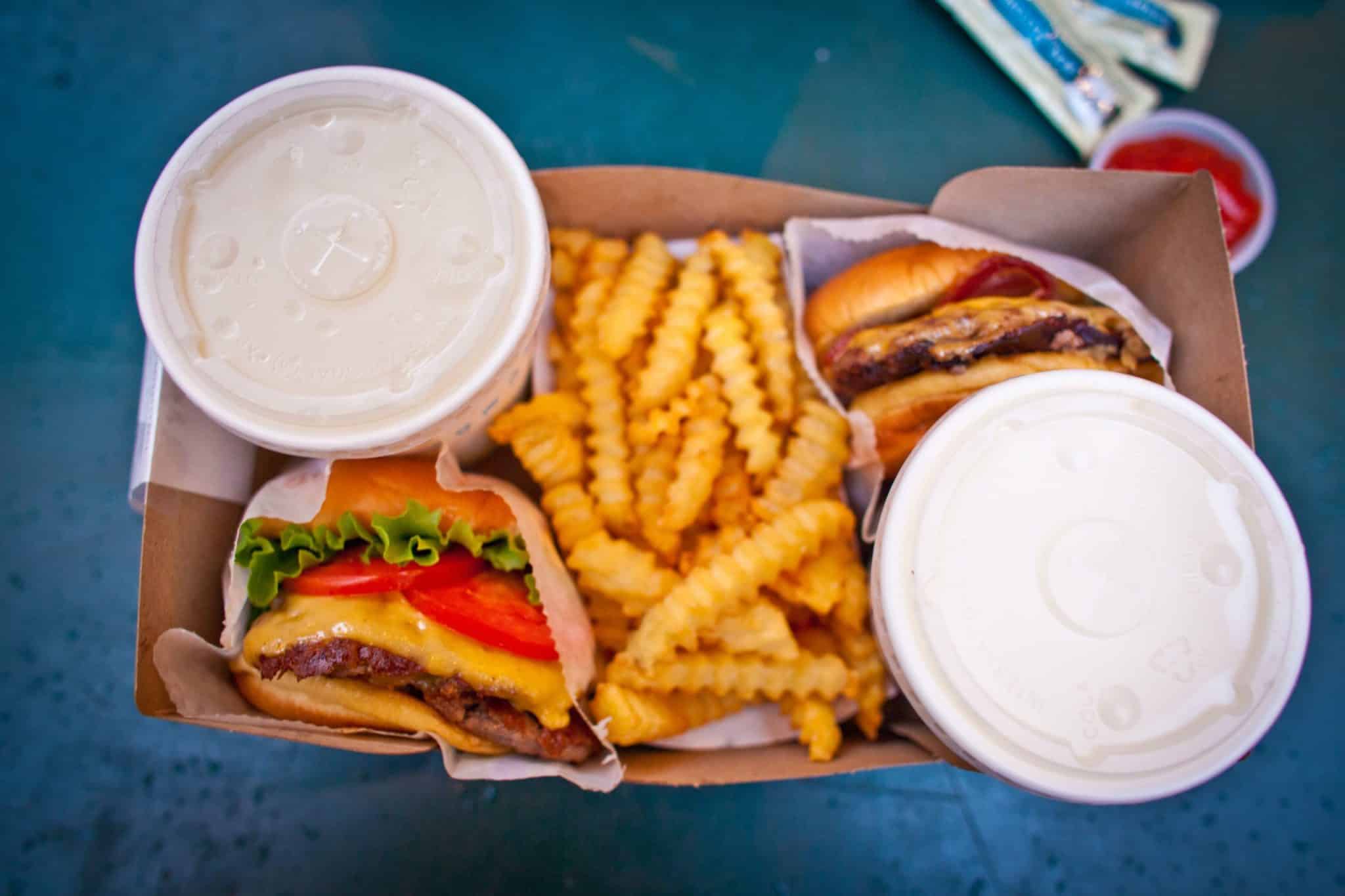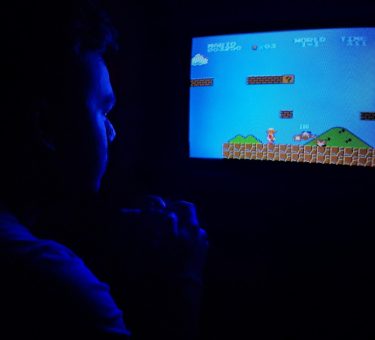Digital menus are popping up in chain restaurants around the country. You’ve probably seen them, maybe even used one – a tall, flat screen that hovers a few feet above the air, dangling visions of hamburgers and french fries in front of your head. Taking the form of screens posted over counters, tablets anchored at the ends of tables, and self-serve kiosks that replace cashiers completely, these screens seem like a natural extension of the online ordering craze that exploded during the 2010’s.
While for the moment, many customers are avoiding entering restaurants and chains are embracing online ordering to contend with the Covid-19 pandemic, that doesn’t mean digital menus are going away. Indeed, the relatively contactless interaction the format provides may well accelerate the trend.
News analysis often focuses on the role of self-service in job decline. More digital ordering does mean less servers and cashiers are required to take orders. The implications, however, go far beyond payroll. Self-service and digital menus have the capability to extend the data-driven approach we’re used to in online stores like Amazon to the restaurant world. Applied machine learning will affect the most material of our daily decisions – our choice on what we put in our mouths. As in so many areas of the sector, global food behemoth McDonald’s is leading the way.
Recent Acquisitions
In March of 2019, McDonald’s spent more than $300 million on acquiring Dynamic Yield, a digital personalization company. In November of 2019, Bloomberg reported that McDonalds is pursuing another acquisition target: Apprente, an early-stage voice-based technology company. Both acquisitions support McDonald’s digital ordering initiatives.
McDonald’s started rolling out self-service ordering kiosks in 2018. By May of 2019, about 60% of US stores had adopted the format. Digital menu boards powered by Dynamic Yield’s technology rolled out that same month. The menus are part of what McDonald’s calls its “Experience of the Future (EOTF)” restaurants. Meanwhile, Apprente, founded in 2017, focuses on ordering platforms that can take orders in multiple languages and accents. The technology is “expected to allow for faster, simpler and more accurate order taking at the drive-thru, with potential to incorporate into mobile ordering and kiosks.”
Data Collection Capabilities
These two acquisitions accompany a seismic shift in McDonald’s tech strategy. The amount of data the company will be able to collect from customers who place orders massively dwarfs the amount afforded in the old, “pay for a Big Mac with a credit card,” paradigm.
When you pay for an order with a credit card at a register in a McDonald’s location, McDonalds can then cross-reference your order information with previous orders you made using that card, and if they like, purchase your transaction history with other merchants from third-party data brokers, or your credit card company. This dataset, while extensive, has two limiting qualities:
- It is retroactive. McDonald’s never had access to real-time information about your ordering decisions.
- It only has one kind of data: data about your credit card transaction, and that data can only be collected if the transaction completes.
Today, McDonald’s can know how many Big Macs you’ve purchased last year. But they won’t know if you walked into a McDonald’s recently, loitered in front of the counter for twenty minutes trying to decide if a hot fudge sundae was worth blowing through your calorie budget, then wandered out without ordering anything when a large family came in and got in line ahead of you. McDonald’s would, in all probability, love to know this. McDonald’s would love to be able to change the outcome of your decision. That’s where a digital ordering strategy comes into play.
An online ordering website can collect data about:
- What items the customer both selects and removes
- What menu categories the customer visits
- The order in which a customer adds or removes items
- What sites the customer visits after they order – or don’t order
A digital touchscreen menu with a camera can also capture:
- A customer’s approximate age
- Their approximate build
- The customer’s mood
- What items the customer’s gaze lingers on
- The weather in the area where the customer is ordering
If the customer has a McDonald’s app installed on their phone, McDonald’s can learn:
- Where the customer has been before and after their visit
- Who else is near the customer when they order
Before digital menus, McDonald’s data collection capabilities began only after the order decision was made. With digital self-service technologies, they can start collecting, analyzing, and even adapting to your behavior the moment you sit or step in front of a menu. The goal: more influence over what you choose to eat.
Personalization
Dynamic Yield calls this influence “personalization.” Personalization can be used, they explain for better targeting, recommendations, testing, behavioral messaging, and triggering via push notifications at the optimal moments. Machine learning technologies have gotten to a place where these kinds of promises are realistic, as long as there is enough behavioral data to feed the prediction engines.
Shoshana Zuboff’s term for the data trails we leave behind in digital space is “behavioral surplus.” In her book, “The Age of Surveillance Capitalism,” she describes a globalized corporate competition to create and mine more and more data about every action we take. Google is the pioneer of these efforts, and far out front of the pack in terms of collection. As corporate leaders around the world seek to emulate Google’s successes, the ability to generate and collect more of this behavioral surplus has been at the forefront of many tech transformation strategies. The end game is not necessarily to replicate Google’s advertising-based business model, but to win the race to the next frontier: using our data in real time to influence our consumer choices.
Next Up: Behavior Change
What could “personalization” look like for the average consumer ordering their meal at a McDonald’s touch screen? To start, the camera would scan their face, and try to match them with the profile of a previous customer. The customer would touch “Get Started” and, based on their history, current weather conditions, and the results of a quick mood analysis, the menu would try to highlight the most profitable items that they were most likely to buy.
Alternatively, if McDonald’s was testing a new menu item and wanted to see how popular it was with customers of a certain demographic, they could feature that item after matching the customer with their demographic profile to see if they “bite.”
A/B testing possibilities abound. Calorie counts are required by law in some states, who hope to influence consumers to make healthier choices. McDonalds could find out conclusively how much impact they have by moving the placement of those counts on menus, and changing how much emphasis they have.
If you look cranky, McDonald’s can add an extra screen to “nudge” you to buy that sundae.
If you cancel your order and walk away, McDonald’s can advertise that sundae via a push notifications to you tomorrow afternoon. Perhaps they will send you a coupon to see if they can get you back in the store.
Challenges for The Technology
Imagine that you’re the head of digital transformation for a national food chain. (Are you? Call us!) The possibilities are endless, so why wouldn’t you go all in on this technology? Why do regular cash registers still exist at all?
One major barrier is capital costs. Kiosks with large, vibrant touch screens, license plate scanners, digital menus, and the networking and maintenance required to install them don’t come cheap. McDonald’s restaurants, for example, operate on a franchise model. While the company has offered to help, franchise owners are responsible for much of the cost of installing the new digital tools. For owners of multiple stores, these costs can run into the tens of millions of dollars. The collected data will certainly enrich McDonald’s in the long term, but it’s less clear how long it would take individual stores to recoup the costs of this capital investment via the projected increase in sales.
Another major barrier is systems maturity. While all the pieces of the technology exist, and are effective in their component forms, wiring them all together and creating real-time data pipelines that are compatible with McDonald’s existing systems is a non-trivial challenge. McDonald’s has owned the technology for over a year but Dynamic Yield’s technology has not yet made it to self-service kiosks. The digital menus shown in the drive-thru lanes of more than 10,000 US restaurants currently personalize based on weather. Individual personalization could be years away.
McDonald’s changing executive leadership also complicates their approach. The CEO who initially drove this technological transformation is no longer leading the company. It is not clear if their successor will have the same dedication to the vision. With enough time and enough data, McDonald’s engineering team might be able to get a chicken nugget on every plate – but only if the company, its franchisees and investors have the patience to wait.
Covid-19 Means Consumers are More Comfortable With Digital
Digital ordering is already ramping up in the first quarter of 2020. Taco Bell actually saw same-store sales increase 1%, with 100% of their ordering occurring through drive-through or contactless delivery. Meanwhile, contactless payments are skyrocketing.
The global disruption caused by Covid-19 has had massive impacts on the restaurant industry. Undeniably, it will continue to do so. Restaurants in most places are open again, but germophobia may still inhibit user adoption of menus displayed on public touchscreens. As the Covid-19 pandemic continues, it is clear that restaurants will to have to revisit their entire dining experience. With proper sanitization approaches and technologies, it makes sense for screen-based ordering to replace face-to-face practices.









